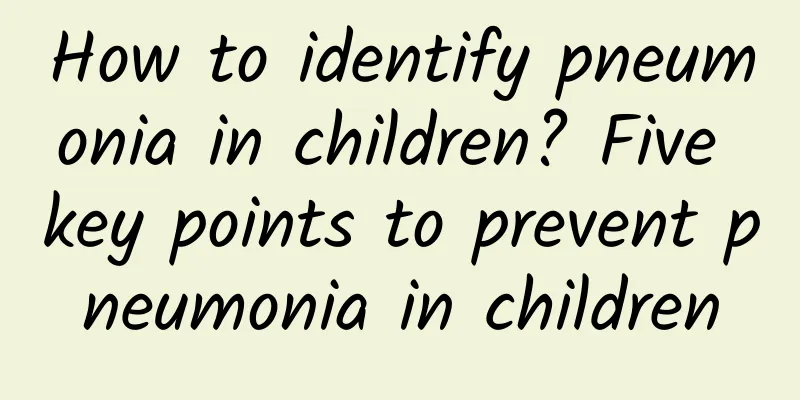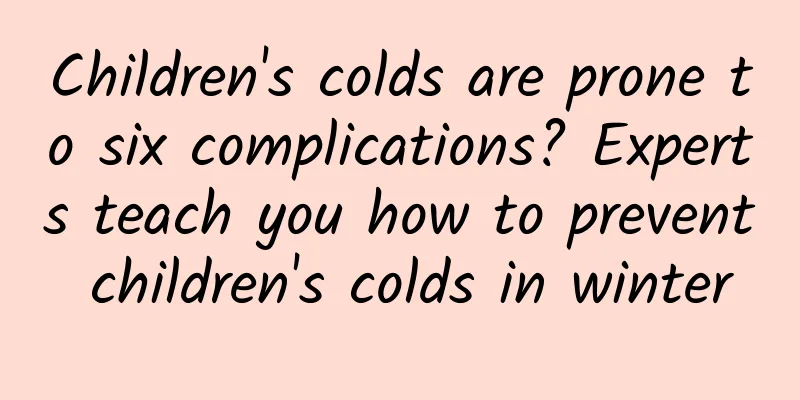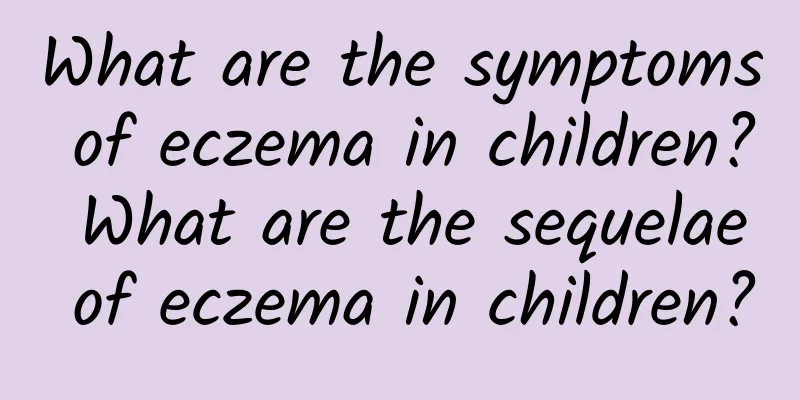How to identify pneumonia in children? Five key points to prevent pneumonia in children

|
Pneumonia refers to inflammation of the lung parenchyma or interstitium caused by various pathogenic factors. It is a very ancient disease. It is reported that evidence of the disease was found on Egyptian mummies as early as 1200 BC. With the development of medical technology, the mortality rate of pneumonia has dropped significantly, but it is still the leading cause of death in children. Pneumonia can be caused by viruses, such as adenovirus, influenza virus, and parainfluenza virus; bacteria, such as Streptococcus pneumoniae, Streptococcus pyogenes, Klebsiella, Pseudomonas aeruginosa, Legionella, etc.; fungi, such as Aspergillus, Candida albicans, Cryptococcus neoformans, etc.; chemical factors, such as sulfur dioxide, ammonia, and hydrochloric acid. People with weaker resistance are more likely to suffer from pneumonia, but healthy people are also prone to pneumonia when the local defense function of the respiratory tract is reduced after being exposed to cold, rain, fatigue, and upper respiratory tract infection, or when they have chronic bronchitis, obstructive pulmonary emphysema, cor pulmonale, bronchiectasis, etc. In addition, radiation therapy, allergies, etc. may also lead to pneumonia. Fever, chills, headache, muscle pain, cough, expectoration (rusty sputum for pneumococcal pneumonia, brown-red viscous jelly-like sputum for Klebsiella pneumonia, yellow-green sputum for Pseudomonas aeruginosa pneumonia), sometimes blood in sputum, chest pain, etc. are all typical symptoms of pneumonia. Some patients may also experience gastrointestinal symptoms, such as loss of appetite, nausea and vomiting, diarrhea and abdominal distension, etc. How to identify pneumonia in children 1. The systemic symptoms of bronchitis are relatively mild, and there is generally no dyspnea or hypoxia. Dry rales and medium-coarse moist rales can be heard in the lungs. They are not fixed and often disappear with coughing or changes in body position. 2. Children with acute miliary tuberculosis often have systemic poisoning symptoms such as high fever, chills, general discomfort, shortness of breath, cyanosis, etc., which are similar to bronchitis, but there are often no obvious signs in the lungs, or there are fine moist rales scattered in both lungs, which are often found at the end of inspiration. The X-ray manifestations are also similar to bronchopneumonia. It can be identified based on the history of contact with tuberculosis, clinical symptoms, positive tuberculin test, increased erythrocyte sedimentation rate, detection of tuberculosis bacteria in sputum or gastric lavage fluid, and X-ray follow-up observation characteristics. 3. Caseous pneumonia This lesion mostly occurs in children who are weak or have low immunity. X-rays show dense consolidation in a lung segment or even a large part of a lung lobe, with blurred contours. Usually, relatively bright liquefied areas or even translucent cavities can be seen. Combined with medical history, tuberculin test, etc., it is easy to distinguish from bronchopneumonia. 4. Bronchial foreign bodies have a history of foreign body inhalation or choking. The clinical severity varies, and the course of the disease varies. Patients with prolonged course of disease and secondary infection may have repeated fever, cough, and moist rales in the lungs similar to pneumonia. Sometimes auscultation and tracheal rapping sounds can help with diagnosis, but the diagnosis depends on fiberoptic bronchoscopy. 5. Bronchiolitis is very similar to acute pneumonia, but the main symptom of this disease is wheezing. Widespread wheezing and fine moist rales can be heard in both lungs. Severely ill children have obvious hypoxia, and X-rays only show increased translucency in both lungs, descent of the diaphragm, and transient emphysema changes. A few sick children have a few spotty shadows. Five key points to prevent pneumonia in children 1. Children with pneumonia should go to the hospital for examination immediately after falling ill. After diagnosis by the doctor, they should be given reasonable medication to prevent misdiagnosis and unreasonable medication. This is one of the ways to prevent pneumonia in children. 2. Try not to take your child to public places or crowded places. The room should be ventilated frequently to keep the air fresh. This is also a preventive measure for pediatric pneumonia. 3. Children with pneumonia should exercise regularly to strengthen their physical fitness. 4. The diet of children with pneumonia should be reasonable, pay attention to protein supplementation, and eat more vegetables, fruits and other foods rich in vitamins. Diet is also very important for the prevention of pneumonia in children. 5. Children who are prone to repeated pneumonia infections should be vaccinated against pneumonia before the arrival of winter. |
Recommend
How to treat jaundice and anemia in children?
How to treat jaundice and anemia in children? Chi...
What Chinese medicine should be used for patent ductus arteriosus
What Chinese medicine should be used for patent d...
Prevention and treatment of hand, foot and mouth disease in children
Hand, foot and mouth disease is a common childhoo...
A simple method for diagnosing pneumonia in children
Pediatric pneumonia is a relatively common diseas...
Is pneumonia in children the same as pneumonia in adults? Is it contagious?
Pneumonia in children and pneumonia in adults are...
How does pneumonia manifest in children?
Newborns are prone to some diseases. We need to p...
Can acute laryngitis in children be cured?
Acute laryngitis in children is mostly caused by ...
Can baby eczema be treated with wormwood? What should be paid attention to when using wormwood for baby eczema?
When a baby develops eczema, not only will there ...
What medicine can a three-year-old child take to recover quickly from hand, foot and mouth disease?
Hand, foot and mouth disease in three-year-old ch...
Can pneumonia in children heal itself?
Very few cases of pneumonia in children can heal ...
What medicine should adults take if they have mumps?
There are many treatments for mumps, but the most...
Commonly used drugs for nebulization of pneumonia in children
In the treatment of pediatric pneumonia, nebuliza...
What are the hazards of acute laryngitis in children?
What are the dangers of acute laryngitis in child...
What virus causes diarrhea in children in summer
Children's diarrhea in summer is often caused...
Routine examination for pneumonia in children
There are many diseases in life, so people need t...









